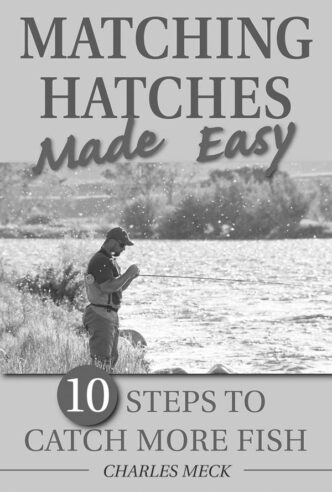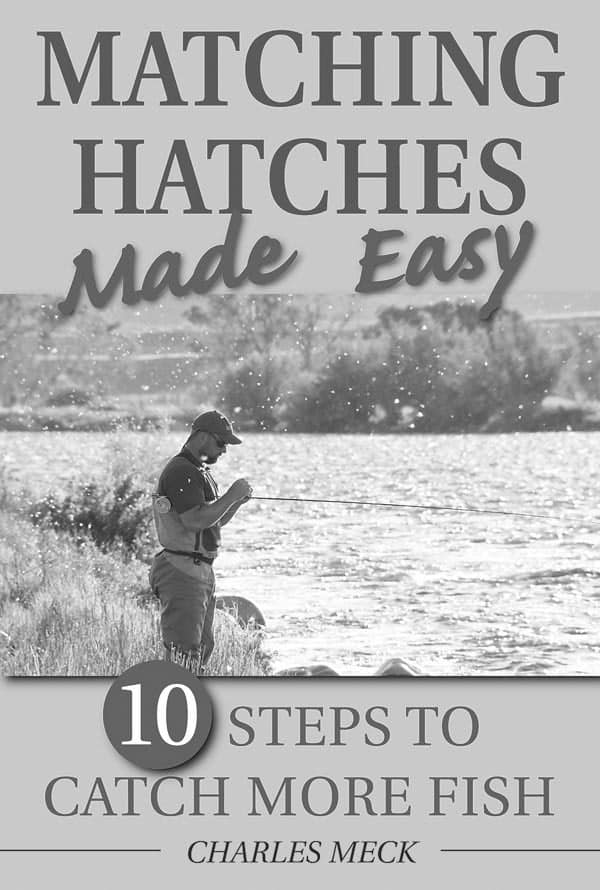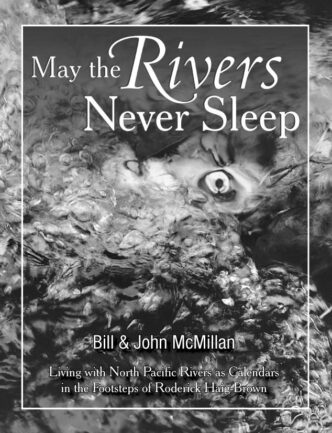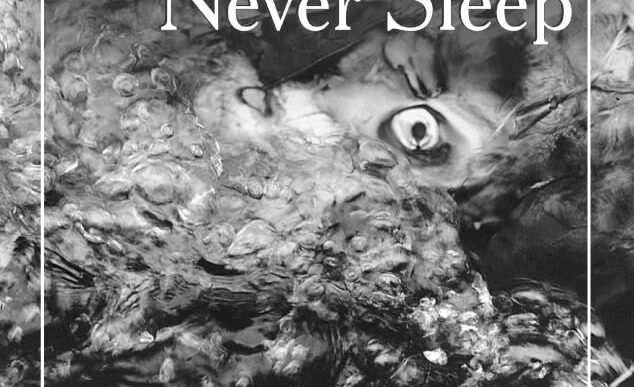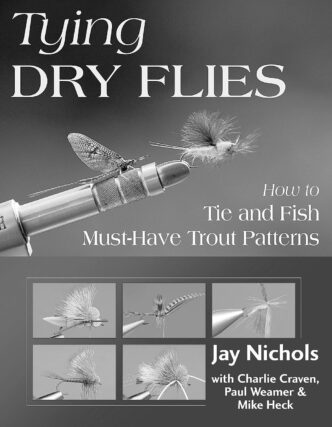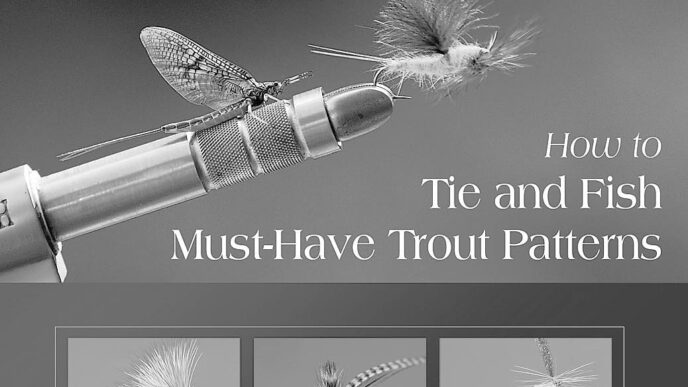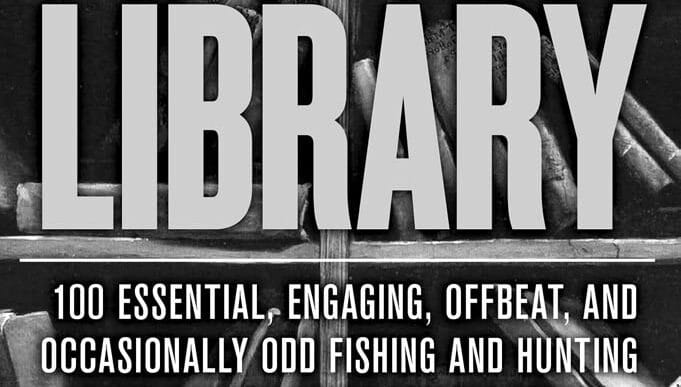Matching Hatches Made Easy: 10 Steps to Catch More Fish
By Charles Meck. Published by Stackpole Books, 2012; $14.95 softbound.
California rivers are mentioned just once in Charles Meck’s Matching Hatches Made Easy — the Fall River and Hat Creek turn up on a list of top waters for finding hatches of Western Green Drakes. In the text, the closest he comes to discussing fishing in California involves anecdotes about fishing hatches on the McKenzie in Oregon, and protests by Oregon natives to the contrary, that state has not yet been annexed by California. But from the first page of the introduction, I was sure I wasn’t going to be reading this book for specific information about specific hatches on specific rivers.
When anyone begins by saying “I’ve had the benefit of fishing the hatches for more than 50 years,” it’s well worth attending to what they have to say. As Meck notes, this is actually his ninth book about fishing hatches, beginning with
Meeting and Fishing the Hatches in 1977 and continuing through Pennsylvania Trout Streams and Their Hatches (1993), Patterns, Hatches, Tactics, and Trout (1995), Great Rivers — Great Hatches (with Greg Hoover, 1996), Trout Streams and Hatches of Pennsyl- vania; A Complete Fly-Fishing Guide to 140 Rivers and Streams (1999), The Hatches Made Simple: A Universal Guide to Selecting the Proper Fly at the Right Time (2002), Mid-Atlantic Trout Streams and Their Hatches: Overlooked Angling in Pennsylvania, New York, and New Jersey (with D. Craig Josephson and Bryan C. Meck, 2003), Arizona Trout Streams and Their Hatches: Fly Fishing in the High Deserts of Arizona and Western New Mexico (with John Rohmer, 2005), and Pocketguide to Pennsylvania Hatches (with Paul Weam- er, 2009).
And that’s just the books he’s written on hatches. Anyone who’s paid any attention at all to angling literature over the past several decades no doubt has encountered writing by Charles Meck. If one didn’t therefore already know it, as the list above in- dicates, Meck’s home waters are in Pennsylvania and, lately, Ari- zona, and while he has fished throughout the United States, his experiences in the West, as recorded in this book, tend to focus on the streams of Intermountain West — Montana, Wyoming, Ida- ho, and the like.
“Write what you know” is never a bad maxim, though, and Charles Meck knows a whole lot about matching hatches, wherever they occur. The purpose of Matching Hatches Made Easy, he declares, is to “distill all I have learned about the hatches into an easy-to-read guide,” and indeed, he pulls together insights and experiences from all those previous books and all those 50 years of angling experience.
As he notes in chapter 1, which is also the Step 1, “Learn bug basics,” in the “10 Steps” of the subtitle, specific knowledge of the life cycles and behavior of the bugs in any given hatch helps tremendously in knowing when, where, and how to fish that hatch, and the book contains a lot of charts and other displays of such information, albeit, as I noted, with a tilt toward the East. However, what I took away from the book was not the wealth of specific information offered in hatch charts and other compilations of insect behavior and characteristics, but the more general insights and observations about what works when one goes fishing with the aim of maybe matching the bugs one encounters on the stream.
For example, although opinions about the relative importance of a fly’s coloration vary, most fly fishers agree that it has some significance. What drives me nuts when I’m tying flies, though, are fly recipes that specify “color to match the natural.” If I indeed knew that, I’d certainly tie my pattern in that color.
However, I’m tying a week before I leave for a trip to a river I rarely get to fish, and as Meck points out, the specific colors of most aquatic insects, when they emerge, vary not only from stream to stream, but from time to time in the same stream and even from place to place in that stream at the same time. They even vary from the time that a natural first emerges to when it is fully emerged. I’m not willing to carry even more fly boxes than I already do, just to anticipate every contingency. What’s a prospective hatch matcher to do?
Meck notes that you can anticipate general color patterns by season, because most bugs need protective coloration to blend with their environment. “The predominant colors of nature in early spring and winter are tans and grays,” he writes, and the contemporaneous hatches of mayflies, caddisflies, and stoneflies tend to be darker shades of brown, tan, or olive, even black, while in the summer, brighter colors predominate, and in the fall, drabber, darker colors again prevail. You and I can anticipate the particular and still generalize, because he has.
Likewise, based on his extensive experience, Meck has some general recommendations for the kinds of patterns that work best for matching hatches. He thinks ribbed abdomens are important imitative features on mayfly and caddis patterns, as are abdomens and thoraxes that are differentiated from each other by color. He thinks Catskill-style dries that sit up on the water on their hackles are unimitative and recommends trimming the bottoms of the hackles, thorax style, and he believes split tails are important features on mayfly dries. He thinks trailing shucks can trigger strikes and suggests carrying small slips of nylon stocking that can be hooked to the fly if that’s what the fish are keying on. And when it’s appropriate for the species of caddisfly, he thinks that adding antennae to an imitation doesn’t just look cute, but catches more fish.
It’s conclusions such as these that seem most significant to me, but then I’m not in a position actually to chase the major hatches like a true trout bum. Fishing when I can, I can still try to follow Meck’s other nine steps beyond learning bug basics: knowing the major hatches, fishing at the right time and the right place, and tying flies that match the shape an profile of the bugs (Steps 2 through 4). Step 5, “Be creative and unorthodox,” is probably just as impossible to follow as most instructions to “be” something are (“Be spontaneous!”), but he has some practical suggestions, such as fishing dry flies — duns or spinners — under the surface, or twitching the fly, or unmatching the hatch. Step 6, “Rig multiple flies” and fish multifly rigs, he notes, is something he learned while fishing the West and took back to the streams of the East, and as any reader of this magazine knows, fishing various dry- and-dropper rigs is not exactly news around here. Multifly rigs do indeed help cover different stages of an emerging hatch at the same time.
In step 7, “Use unconventional flies,” Meck proposes the ultimate solution to the issues of matching colors, shapes, and patterns discussed above: tie simple flies using only materials that are white, carry a bunch of permanent markets and some scissors, and color and trim to shape the flies on the stream. His Color Matcher and Quick Trim patterns are practical, simple, and easy to tie and fish.
But where’s the fun in that? What am I to do with my large and ever-growing collection of feathers, fur, and processed- chemical fibers? I prefer to move on to step 8, “Observe nature.” By that he means pay attention to the correlation between the timing of hatches and such things as the weather (cloudy, rainy, cool days not only make many bugs pop, but have the added virtue of deterring other anglers from fishing). He’s also an advocate of what’s known as “phenology,” the study of “the relations between climate and periodic biological phenomena (as bird migration or plant flowering),” as the dictionary puts it, with the blooming of certain plants correlating with the arrival of specific hatches in uncanny ways — and all now occurring earlier than they did 50 years ago, according to Meck.
If you’re in a position to be choosy and can chase specific hatches, you can also take steps 9 and 10, “Seek the dependable hatches” and “Pick your stream wisely.” Any hatch is better than no hatch, but not all hatches are good hatches. One that goes on too long makes the trout jaded, and if the hatch is too numerous, your imitation gets lost among the naturals. And of course, the streams with famous hatches get crowded. Personally, I’d settle for having those problems, even on a California stream that doesn’t make Meck’s list of top waters for fishing the major hatches.
Bud Bynack
Pocketguide to Western Hatches
By Dave Hughes. Published by Stackpole Books, 2011; $21.95 hardbound.
As predictable as the Hex hatch on the Fall River, a new Western hatch guide has emerged from the fertile keyboards of the Pacific Northwest. In 1981, Dave Hughes and Rick Hafele published The Complete Book of Western Hatches: An Angler’s Entomology and Fly Pattern Field Guide. It was a groundbreaking work that helped ease a generation of fly fishers into the arcane science of identifying insects streamside, understanding a bit of their life histories, and selecting the appropriate imitations and presentations. Western Hatches proved to be the first in a 30-year hop-scotch of hatch guides produced by Hugh- es, Hafele, Richard Bunse, and Jim Schollmeyer.
Despite its title, Hughes’s Pocketguide to Western Hatches more closely resembles a minor evolution of Schollmeyer’s Hatch Guide for Western Streams than it does the original Western Hatches. It is a short, squat volume (four inches by six inches by one inch) with a durable stitched spine and a hard cover. Though it is heavier than you’d want to carry in a fishing vest, it should survive many seasons in a glove box, boat bag, or day pack.
Part 1 of the book skims through various presentation techniques and considerations regarding water types and hatch timing. It is something you might want to read during an afternoon break on the river to jog your memory of a technique long forgotten or idea not considered at the moment.
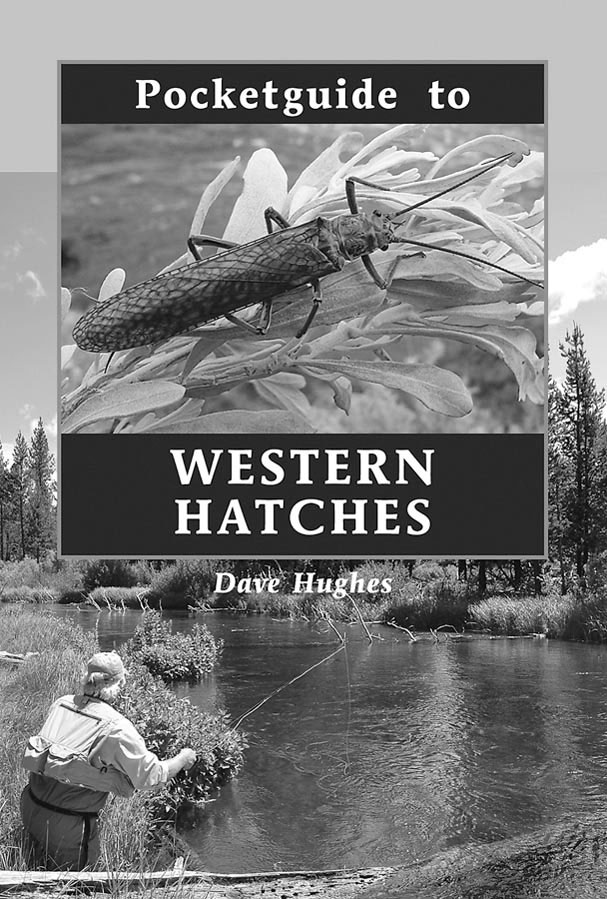
The meat of the book, the actual hatch guide, starts on page 40. Each life stage (for example, nymph, dun, spinner) of each bug is given two facing pages to describe the creature. The information is presented in a template format, categorized under the headers of “Habitat,” “Emergence,” “Behavior and Tactics,” and “Known Hatches.” This template approach likely made sense in the planning stages of the book, but its constraints are hard to ignore. As an example, the location of known hatches of a Blue-Winged Olive nymph is the same as that of its dun and its spinner. It is not really necessary to spend half a dozen lines describing the location of known hatches for each stage of an insect’s life. I suspect that Dave realized he had painted himself into a corner, and he does a credible job of adding enough personal observations and anecdotes in the “Known Hatches” sections to avoid being overtly superfluous.
Like Schollmeyer’s book, the left page of each template contains a color photograph of the insect in question. Many of the photos are actually the same ones used by Schollmeyer. The photos are universally tack sharp, clear, and well lit. A call-out box set within the photograph lists the key features for identifying the insect. On the facing page is a color photo of one or two patterns representing the bug. This is a down-and-dirty way to match the hatch, even if the reader isn’t quite certain he or she has stumbled upon exactly the right bug.
Stumbling, however, is the only way to find a bug. The book lacks keys or other prompts to direct the reader toward the general direction of the correct insect. Coming from a background where keys for identifying insects are a way of life, I found this rather disconcerting. However, the book is small enough that simply thumbing through the pages and looking at the pictures isn’t an unreasonable option.
Pocketguide to Western Hatches wraps up with the requisite list of pattern recipes and hatch charts. It would be nice to have pictures accompany the pattern recipes, but it isn’t difficult to ferret out a photo of the pattern via the very thorough index.
Ralph Cutter
The Mayfly Guide: Quick and Easy Steps to Identifying Nymphs, Duns, and Spinners
By Al Caucci. Published by Scott & Nix, 2011; $26.95 spiral bound.
It is hard for me to believe that (only) 28 years ago I reviewed Instant Mayfly Identification for Frank Amato in Flyfishing the West magazine. Instant Mayfly ID was an instant hit and defined the bleeding edge of insect field guides. Al Caucci and Bob Nastasi thought outside the box, stepped away from tedious dichotomous
keys, and developed a completely new and simple way to key out the identities of mayfly nymphs, duns, and spinners. After Bob passed away in 2004, Al set out to rewrite and completely update their mile-stone work. The result is The Mayfly Guide. The Mayfly Guide is a sturdy, pocket-sized book (at a slim 82 pages, it will be relatively unobtrusive in a fishing vest or boat bag), printed on waterproof paper and spiral bound so that it truly is a field guide. Like its predecessor, the book is built around the Caucci/Nastasi graphical keying system. Unlike its predecessor, it includes color photographs of most of the bugs. The amount of time and effort needed to get these photographs must have been boggling.
Unfortunately, mayfly coloration varies by region. Even relatively close waters such as the Truckee, Yuba, and Hat Creek will sport the exact same insect in different flavors. Pale Morning Duns (Ephemerella infrequens) can be orange, tan, yellow, and light green in just these three waters. Ernie Schwiebert recognized this limitation back in 1955 when he illustrated Matching the Hatch. For a little field guide to represent PMDs across the continent in one or two photograph is just asking for trouble.
Epeorus albertae are commonly known as “Pink Alberts” or “Pink Ladies” because they are . . . pink (at least across the Cascades, Rockies, and Sierra). The book describes E. albertae not as pink, but as having gray wings over gray bodies, which is undoubtedly accurate where the author lives, but is the exception, rather than the rule throughout most of their range. There are more than a few images that will send the Western angler down the wrong path. My advice is to stick with the excellent graphic keys and ignore the photographs in the visual index.
Using the graphic keys for duns and spinners is as simple as counting the wings and tails of the mayfly, then deciding if the wings are mottled or not. With nymphs, you look at the tails and body shape and go from there. With just a few taxonomic benchmarks, you can quickly and easily identify the bug in hand.
The book is heavily cross-indexed with photographs, species names (with a welcome pronunciation guide), and common names. The major hatches are highlighted in yellow, and next to each species account is a little red bar denoting the actual length of the bug. The red bar is useful for most mayflies, but for those such as the Callibaetis, which hatches several times throughout the season (ranging from a size 10 in May to a size 22 in November), the bar can be pretty misleading. But if you want a mayfly field guide, there is nothing else on the market like this book.
Ralph Cutter
Salmon Fishing in the Yemen
A film by Lasse Hallstrom, 107 minutes. Written by Simon Beaufy, based on a novel by Paul Torday.
How could any self-respecting angler resist a film called Salmon Fishing in the Yemen? Yemen is most frequently associated with headlines such as “Deadly Clash with Yemeni Separatists” or “Yemen Seeks Billions of Dollars in Aid to Revive Economy.” But salmon fishing? In a movie? What’s not to like? Well, actually, plenty.
Here’s the set-up. A wealthy Yemeni sheikh is also an addicted Atlantic salmon angler. Not that you’d meet this guy at a lodge or anything. He owns his own Scot- tish river, complete with castle and multiple servants. But he’s also an altruist who wants to do something good for his country (which surely needs it, if the headlines are any indication), something to give them Hope for the future, with a capital “H.” What better choice is there than to build a dam in Yemen’s mountains, capture enough water to make improved agriculture possible, and, oh yeah, introduce Atlantic salmon into the river below the dam. Salmon, you see, return to their natal rivers, and like the sun rising each morning, that’s something that reinforces our Faith, a capital “F.” Angling for salmon likewise is an act of Faith. Bring salmon to the Yemen, and the sheikh imbues progress with spiritual virtue. Well, OK.
To represent him in this endeavor, the sheikh enlists the aid of a young woman who works for the British firm that represents his other interests. Need I mention that she’s a serious cutie, played by Emily Blunt? Smart too, it turns out, though we’re supposed to intuit that from what other people tell us, from the fact that she’s
not entirely ignorant of what’s involved in the project, speaks well, and carries a clipboard. Fine, but if I needed an assistant to help me spend big bucks, I’d have looked for someone with a little more gravitas, like Helen Mirren. Not the Helen Mirren who played a naked Roman bimbo in Caligula. I’m talking the Helen Mirren who played Queen Elizabeth, who also has a nice salmon river. There’s just no substitute for experience.
Meanwhile, back at Number 10 Downing Street, the British prime minister’s type-A press assistant decides that there’s too much bad news about Britain’s involvement in the Middle East. She therefore demands that her staff come up with a feel-good story to balance things out. What’s chosen, more or less by accident, is the Yemeni sheikh’s salmon project. Pressure from On High to make this project work lands it in the lap of a prominent British (or is that Scottish?) fisheries biologist, played by Ewan McGregor, who can’t believe what he’s being asked to do. Me, I couldn’t believe he was being so rude to Emily Blunt. I mean, even if he’s a shy- scientist type and has an annoying wife, you’d think he’d have cozied up to the assistant a bit simply because she’s a babe. But he’s a tough sell and remains so even when he learns that the dam is already in place and the sheikh is willing to put up 50 million pounds on the salmon project. He’s still skeptical, but of course, everyone in the audience knows it will all work out somehow, because there’s still an hour left in the movie.
At any rate, the sheikh and the biologist (who, by the way, is also a keen angler who ties flies) go fishing on the sheikh’s Scottish river and manage to bond as only anglers can when one of them owns a river. To quell the biologist’s doubts about the project, the sheikh explains the concept of Faith and gets the biologist to buy into the idea that if everyone involved has enough of it, things just may work out. It’s no different, you see, than the conviction that any angler puts into efforts to catch a fish that may or may not be there and, if there, may not want your fly. And even if it does, it isn’t a sure thing, because a terrorist might be lurking somewhere ready to squeeze off a full magazine from an AK- 47 before you land your fish.
But I’m getting ahead of myself, though I probably should mention that the biologist saves the sheikh from a bullet-riddled death while fishing — indeed,
while hooked up with a salmon — and does so by making a hasty snake roll cast (I kid you not) that either jerks the sheikh out of the way or gets him to duck. It was hard to tell, and I wonder still how the terrorist could have missed at such close range. Anyway, we’ve got a dam, a river, a cute assistant, a philosophic sheikh who now owes the biologist his life, and an increasingly engaged biologist who must be happy he learned that snake roll and who begins to see just how cute Emily Blunt really is. But where do they get the salmon? Here’s where the story becomes just a bit implausible.
The biologist’s first thought is to take 10,000 adult salmon from Scotland’s rivers and fly them to Yemen. But there’s a huge hue and cry from local anglers, who are, surprisingly, protective of the salmon that still swim in UK waters and aren’t anxious to see them shunted off to Yemen, even if it will make the sheikh, the cutie, the press attaché, and the prime minister happy. No, those selfish UK anglers don’t give a hoot about how this will all provide Hope, and maybe even Faith, to the Yemeni people. Selfish, selfish, selfish.
Now the question I had, given the weirdness of trying to start a run of salmon in a Middle Eastern river by planting adult salmon, was how come they don’t go the egg route? Set up a hatchery on the Yemeni river, then release the resulting lit- tle smolts and hope they come back big and strong with tales of life in the Indian Ocean. But does that occur to anyone? Not a chance.
Given the opposition to the export of live wild salmon, rather than smoked salmon, from Scotland, the solution, reached after much soul searching about whether it’s the Right Thing to Do, is to transport farm-raised adult salmon to the sheikh’s river. One senses that the biologist understands that farmed salmon are a big step beneath normal hatchery-raised fish. But it turns out that the problem isn’t whether farm-raised salmon are the pisca- torial Antichrist. Rather, it’s whether these fish have any remaining natural instinct to (as the movie folks put it), “run.” We are left for many minutes to wonder about this.
So let me once again recap. We’ve got a philosophical sheikh with a fortune he’s happy to spend on a total crap shoot. We’ve got a biologist whose reluctance about the project wanes even as his interest in the cutie waxes, which of course leads him to rethink his lousy marriage. Big surprise there. And did I mention that the cutie’s boyfriend, for whom she has Big Love, has gone missing in action in Afghanistan? OK, he has, and she pines mightily, though she gradually falls for the biologist when she thinks the boyfriend has been taken out by whoever the current Afghan bad guys are. Another big surprise. Anyway, we’ve also got a dam and a river in Yemen and what looks to be some holding ponds for a bunch of farm-raised salmon who’ll clear customs at Heathrow and wing it to Yemen. We’ve got a prime minister’s assistant, who sees the project making a great public-relations splash. And we’ve got some terrorists who object to the project because it’s somehow unnatural, or Western, and therefore an affront to God. Which is of course the case. They remain the only sensible folks in the story.
What happens? Let me save you $10 or whatever your local multiplex or video rental store gouges for a hundred minutes’ worth of bewilderment. The project goes forward, the boyfriend comes back from Afghanistan and becomes part of a press event when the salmon are released, the assistant runs to him, and the biologist grieves briefly for the loss of a perfect love, though he’ll always have the sheikh. But the press attaché and the sheikh are happy, and the salmon appear to have some interest in “running,” though this is claimed more than demonstrated. Within minutes of this discovery, the sheikh and the biologist begin fishing for them (within 250 yards of the stocking site, which is so un-cool), and all seems briefly blissful.
The terrorists, however, are unhappy and send a tidal wave of water downriver out of the dam, flooding the project. The holding pens are trashed, and everybody gets washed away and almost drowns, but of course they don’t, because if they did, the cutie couldn’t rethink her life, dump the soldier, proclaim her love to the biologist, and we couldn’t witness the stunning resilience of a few farmed salmon that seem to have survived the flood and start “running.” Faith and Hope are thus proclaimed victorious. Not to mention Love.
Is the movie a dud? No more so than many, though this one demands an even stronger suspension of disbelief than is usual, at least for those of us reasonably familiar with salmon husbandry and fishing. The photography is frequently stunning. Ewan McGregor can cast. The sheikh, otherwise ably played by Amr Wakd, can’t. Emily Blunt gives good clipboard. Kristin Scott Thomas, as the high-pressure press attaché who balances a career with a home life, steals every scene she’s in and is almost worth the price of the ticket. Still, had I known then what I know now, like the salmon, I, too, would have run.
Larry Kenney



